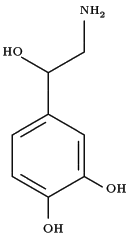INTRODUCTION: Hypereosinophilic syndrome (HES) is a systemic illness that usually presents with nonspecific symptoms. However, HES can be fatal, particularly when eosinophils infiltrate vital organs. We report a patient with HES who presented with a sepsis-like syndrome and rapidly improved with Drotrecogin-alpha therapy.
CASE PRESENTATION: A 52 yr old male presented to an outside hospital (OSH) with debilitating abdominal pain 12 days prior to his transfer to Indiana University. Two months ago he underwent an outpatient evaluation for fatigue, arthralgias, nonproductive cough and intermittent abdominal pain. Upon admission to the OSH he underwent an exploratory laprotomy which revealed colonic perforation. A small portion of bowel was excised with end to end anastomosis. Surgery went well but he was reintubated 2 days later for increasing dyspnea. Upon transfer, the patient was intubated, on FiO2 of 100% and PEEP of 15. He was hypotensive and required levophed. Except for a heart rate of 122, a benign post op abdomen, and bilateral rhonchi his exam was normal. Admission automated CBC showed a WBC count of 36,000 with 57N, 27B, 6E (manual differential showed 40% eosinophils, erroneously reported as bands). His hemoglobin was 9.4. His transaminases were mildly elevated and a troponin I was 25units. Chest radiograph revealed diffuse bilateral airspace opacities. The patient was continued on broad spectrum antibiotics. Drotrecogin-alpha was added for treatment of presumed sepsis on admission. Over the first 18 hours of Drotrecogin-alpha infusion, the patient dramatically improved and at the end of the 96 hour infusion the patient was weaned to 50% FiO2 and 8cm PEEP. Troponin had normalized. Despite improvement, mechanical ventilation was unable to be discontinued. CT scan of the chest showed extensive ground glass opacities and bibasilar infiltrates (figure 1). Bronchoscopy was performed and revealed 94% eosinophils in the lavage fluid (figure 2). Pathology from the recent colon resection was reviewed and showed marked eosinophilic infiltration and eosinophilic vasculitis. Bone marrow biopsy showed hypercellular marrow with eosinophilic precursors and no blasts. Hypereosinophilic syndrome was diagnosed and the patient was started on steroids (60mg IV q6) and hydroxyurea. The patient was extubated 24 hrs after the initiation of steroids. He did well over the next few days and was discharged home on 40 mg of prednisone.
[FIGURES 1-2 OMITTED]
DISCUSSIONS: Hypereosinophilic syndrome is a systemic illness which can be rapidly fatal. The criteria for diagnosis include a blood eosinophilia of >1500/uL for more then six months, no other apparent etiologies for eosinophilia, and evidence of end organ dysfunction. Some of the common symptoms are fatigue-26%, cough-24%, dyspnea-16%, fever-12%, myalgia-14%, angioedema-14%, skin rash-12% and visual problems-10 %. Involvement of skin, heart, nervous system, lungs and spleen occurs in 45-60% of cases. Thromboembolic events are common and anticoagulation is universally administered. Specific treatment regimens for HES include steroids, chemotherapeutic agents (hydroxyurea), and immune modulators such as interferon-alpha and anti-interleukin 5 antibody. The tyrosine kinase inhibitor, Imatinib mesylate, has also been shown to be efficacious in the treatment of HES. Drotrecogin-alpha has anti-inflammatory and anti-thrombotic effects, as well as recently recognized effects on eosinophil recruitment, which may explain its usefulness in the management of HES.
CONCLUSION: Drotrecogin-alpha therapy was associated with a rapid and substantial improvement in hemodynamic parameters, static compliance, and cardiac function in the absence of any other therapy for HES. Additionally, no identifiable source of infection was found. This case highlights the importance of early diagnosis of HES and the utility of APC therapy in SIRS related to HES.
REFERENCE:
(1) Feistritzer, et al. Endothelial protein C receptor-dependent inhibition of human eosinophil chemotaxis by protein C. J Allergy Clin Immunol. 2003 Aug;112(2):375-81
DISCLOSURE: Aliya Noor, None.
Aliya Noor MD * David E. Miller MD Patricia A. Smith BS Kenneth S. Knox MD Indiana University, Indianapolis, IN
COPYRIGHT 2005 American College of Chest Physicians
COPYRIGHT 2005 Gale Group



